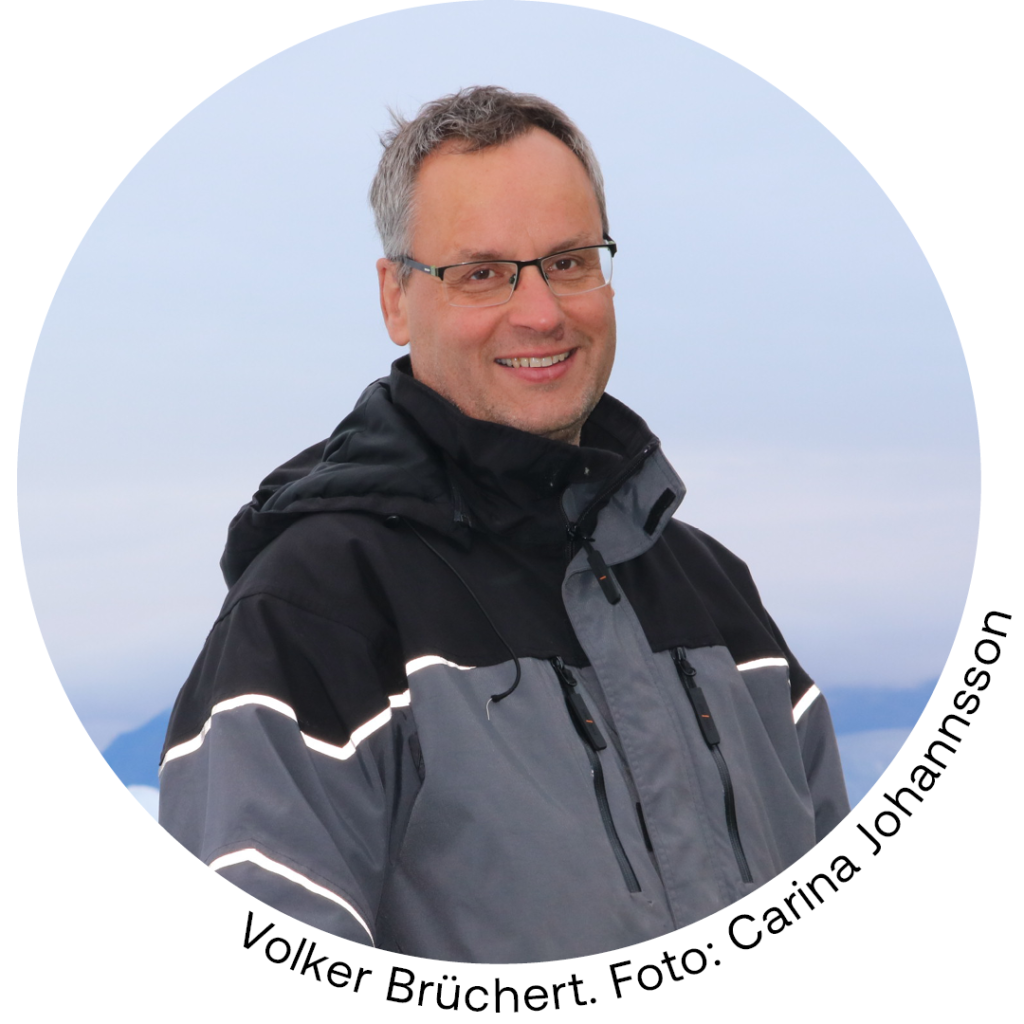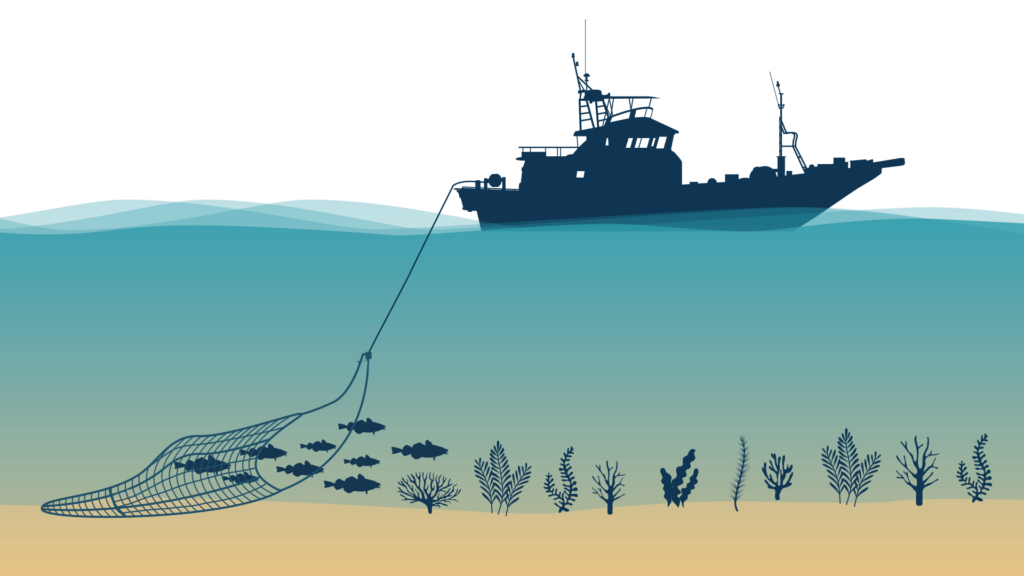Many people are aware that eutrophication leads to oxygen depletion in the Baltic Sea. It is sometimes claimed that bottom trawling helps to oxygenate the seabed by mixing oxygen-rich water into the sediments. But is this really true? We get to the bottom of this claim and explain why disturbance of the seabed actually exacerbates oxygen depletion.
Oxygen is vital for many species and organisms, both on land and in the sea. In agriculture, oxygen availability is increased by ploughing the soil. The soil is turned and aerated, allowing oxygen to enter the soil more easily. In a similar way, sediments are ploughed up when bottom trawls are dragged across the seabed. Despite the apparent similarity in method, the two processes are not comparable for several important reasons.

If you trawl in an area where the bottom water is oxygenated, oxygen is added when new water mixes with the sediments. But the effect is short-lived – after just a few hours, the new oxygen has been used up. Volker Brüchert, associate professor of geochemistry at the Department of Earth Science at Stockholm University, explains how this works:
– The sediments contain large amounts of organic material and hydrogen sulphide. When this comes into contact with oxygen, several chemical reactions are triggered that quickly consume the oxygen that is added, he says.
These processes consume oxygen faster than it can be replaced when the sediments are mixed by the trawl. For bottom trawling to have a long-term effect on oxygen conditions in the sediments, it would be necessary to trawl continuously – which would have extensive effects on the marine ecosystem. The loss of biodiversity in the sediments not only has direct negative effects on the ecosystem, but also contributes to further oxygen depletion.
– Normally, there is a diversity of bottom-dwelling animals that transport oxygen from the water to the bottom through their activity. When these animals disappear as a result of trawling, the sediments lose an important source of oxygenation, explains Volker.
Bottom trawling also changes the structure of the sediment, which also has a negative impact on oxygen levels. The sediment is stirred up into a large cloud and when the particles sink back to the bottom, they are sorted by size – heavy particles, such as sand and minerals, settle at the bottom, while finer particles, such as clay and organic material, end up at the top.
– When the organic carbon stored in the sediments collects at the top, it is exposed. This triggers rapid decomposition, which not only consumes oxygen but can also lead to the release of greenhouse gases, says Volker.
And perhaps the claim could have been true – if the oxygen levels in the bottom waters were replenished regularly. But the Baltic Sea is not like other seas. Here, there is a strong stratification between the salty deep water and the fresher surface water. This stratification prevents mixing between the water layers and stops oxygen from reaching the bottom.
– In the context of the Baltic Sea, the claim is completely backwards. Since no new oxygen is supplied at the same time as oxygen consumption at the bottom increases, bottom trawling simply leads to a decrease in oxygen levels instead of an increase, concludes Volker.

What is bottom trawling?
Bottom trawling is an effective but harmful fishing method in which large funnel-shaped nets are dragged across the seabed to catch bottom-dwelling species. In Swedish waters, a type of bottom trawl with two heavy trawl doors is used to keep the net open at the bottom. The trawl ploughs through the sediment, disrupting bottom life, creating turbulence and suspending material from the bottom.
Oxygen depletion in the Baltic Sea
The Baltic Sea is essentially a naturally oxygen-depleted sea. This is partly due to its unique geography, where the inflow of oxygen-rich water from the North Sea is limited, and partly due to the stratification between salt and fresher water, which prevents mixing between the water layers. However, the serious situation that prevails today is far from natural. Today, 18 per cent of the Baltic Sea’s bottom area suffers from total oxygen depletion, and a further 34 per cent of the bottom area is estimated to have low oxygen levels. The widespread oxygen depletion is primarily the result of many decades of eutrophication, in which nutrient leakage from agriculture has played a decisive role.
Photo: Nicklas Wijkmark, Azote Library

Conclusion
The claim that bottom trawling oxygenates the Baltic Sea floor lacks scientific support. On the contrary, research shows that bottom trawling triggers various oxygen-consuming processes and disrupts natural mechanisms that otherwise supply oxygen. Comparing bottom trawling to ploughing a field may seem logical at first glance, but in the oxygen-depleted and stratified environment of the Baltic Sea, the effect is the opposite – oxygen depletion is exacerbated. Bottom trawling reduces biodiversity, especially in shallow or coastal areas. Important ecosystem services, such as carbon sequestration, can also be impaired when the seabed is disturbed, which in turn risks increasing greenhouse gas emissions from the sea. Pelagic trawling (trawling in the open water for species such as herring and sprat) can also affect the seabed, as it is carried out close to the seabed at certain times of the year.
Hopefully, the waters seem clearer now!

Are the dead zones in the Baltic Sea really dead?
It is often said that large parts of the Baltic Sea are dead. What this refers to is that there are extensive areas, specifically the seabed, that are oxygen-free or have low oxygen levels. But does this really mean that there is no life in these areas?
We answer this question in another murky water, read it here!

